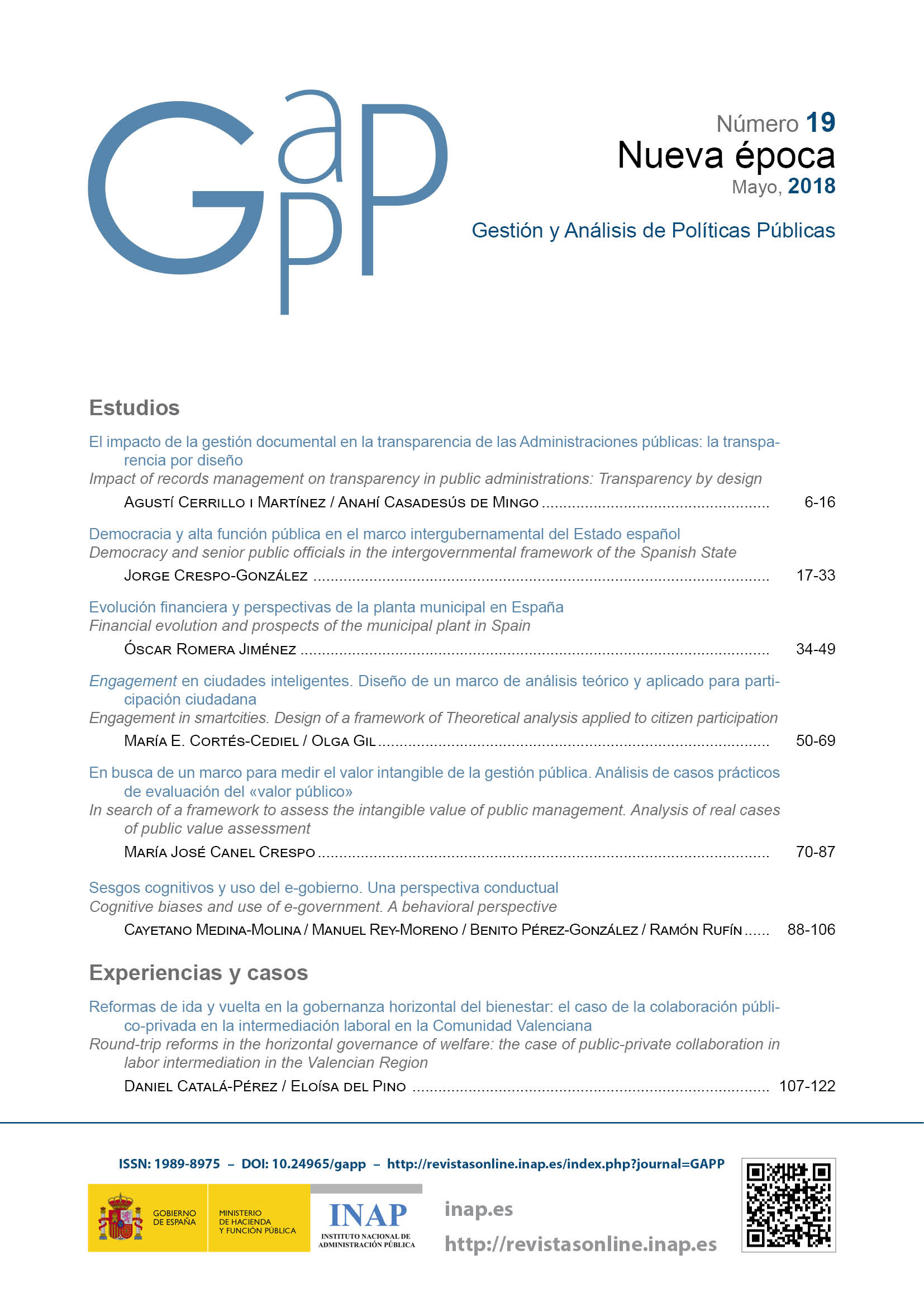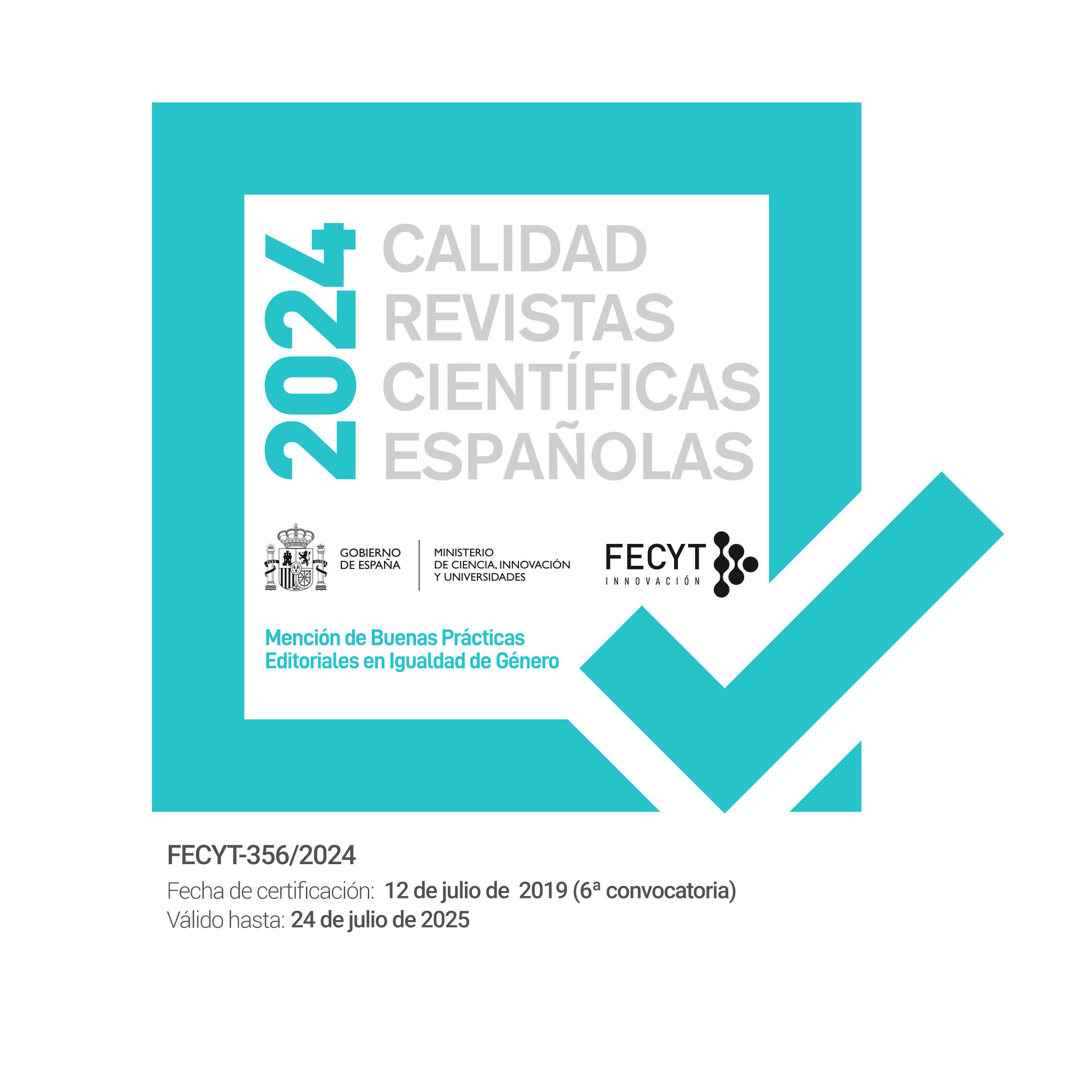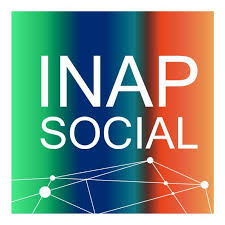Engagement en ciudades inteligentes. Diseño de un marco de análisis teórico y aplicado para participación ciudadana.
DOI:
https://doi.org/10.24965/gapp.v0i19.10505Palabras clave:
Engagement, ciudad inteligente, participación ciudadanaResumen
El “engagement” puede definirse como un estado psicológico en el que el individuo centra toda su atención y disfruta de la actividad que está realizando. La literatura resalta la importancia de la búsqueda por parte de gobiernos y administraciones de este estado en el ámbito de la participación ciudadana. Las ciudades inteligentes poseen iniciativas de participación ciudadana. Sin embargo, hasta donde llega nuestro conocimiento, las claves previstas en la literatura sobre cómo puede fomentarse el engagement en participación ciudadana no han sido estudiadas en profundidad. Abordando este hecho, este artículo tiene como objetivo elaborar un marco teórico del engagement del ciudadano en participación ciudadana dentro de las ciudades inteligentes. Para ello, en primer lugar, se ofrece una definición del concepto y se identifican una serie de atributos que lo caracterizan. Además se presenta una revisión de la literatura sobre herramientas de participación en ciudades inteligentes. Posteriormente, se analizan si esas herramientas influyen en atributos del engagement. El resultado del estudio es la elaboración de un marco teórico con aplicaciones prácticas que integra atributos característicos del engagement en el campo de la participación ciudadana, y la identificación de herramientas de participación analizando si pueden ser diseñadas para incrementar los niveles de engagement de los ciudadanos.
Descargas
Citas
ABOULAFIA, A., y BANNON, L. J. (2004). “Understanding affect in design: An outline conceptual framework”. Theoretical Issues in Ergonomic Science, 5 (1), 4-15. https://doi.org/10.1080/1463922031000086708.
ALAWADHI, S., ALDAMA-NALDA, A., CHOURABI, H., GIL-GARCIA, J. R., LEUNG, S., MELLOULI, S. y WALKER, S. (2012). “Building understanding of smart city initiatives”. In 11th International Conference on Electronic Government, págs. 40-53. https://doi.org/10.1007/978-3-642-33489-4_4.
ALBINO, V., BERARDI, U., y DANGELICO, R. M. (2015). “Smart cities: Definitions, dimensions, performance, and initiatives”. Journal of Urban Technology, 22 (1), 3-21. https://doi.org/10.1080/10630732.2014.942092.
ANDRÉS, J., y BONIVENTO, H. (2009). “Problemas institucionales de la participación ciudadana: análisis conceptual y aplicación al caso colombiano”. XXII Concurso del CLAD Sobre Reforma del Estado y Modernización de la Administración Pública, págs. 1-23.
ANTTIROIKO, A. V. (2016). “City-as-a-Platform: The rise of participatory innovation platforms in Finnish cities”. Sustainability, 8 (9), 922. https://doi.org/10.3390/su8090922.
ATTFIELD, S., KAZAI, G., LALMAS, M. y PIWOWARSKI, B. (2011). “Towards a science of user engagement” (position paper), en WSDM 2011 workshop on user modelling for Web applications, págs. 9-12.
AVERSANO, P., RAJU, A., MECHANT, P. y BALLON, P. (2013). “Reuse potential assessment framework for gamification-based smart city pilots”, en 2nd International Biennial Conference Hybrid City, Subtle Revolutions, págs. 17-23.
BANDURA, A. (2001). “Social cognitive theory: An agentic perspective”. Annual review of psychology, 52 (1), 1-26. https://doi.org/10.1146/annurev.psych.52.1.1.
BONSÓN, E., ROYO, S. y RATKAI, M. (2015). “Citizens’ engagement on local governments’ Facebook sites: An empirical analysis: The impact of different media and content types in western Europe”. Government Information Quarterly, 32 (1), 52-62. https://doi.org/10.1016/j.giq.2014.11.001.
BONSÓN, E., TORRES, L., ROYO, S. y FLORES, F. (2012). “Local e-government 2.0: Social media and corporate transparency in municipalities”. Government information quarterly, 29 (2), 123-132.
BOVAIRD, T. (2007). “Beyond engagement and participation: User and community coproduction of public services”. Public Administration Review, 67 (5), 846-860. https://doi.org/10.1111/j.1540-6210.2007.00773.x.
BRUGUÉ, Q., FONT, J. y GOMÀ, R. (2003). Participación y democracia. Asociaciones y poder local. Movimientos sociales: cambio social y participación. Madrid: UNED, 109-132.
BRYNSKOV, M., BERMÚDEZ, J. C. C., FERNÁNDEZ, M., KORSGAARD, H., MULDER, I., PISKOREK, K. ... y de WAAL, M. (2014). “Urban interaction design: Towards city making”. Urban IxD Booksprint, 96.
BRYER, T. A. (2013). “Designing social media strategies for effective citizen engagement: A case example and a model”. National Civic Review, 102 (1), 43-50. https://doi.org/10.1002/ncr.21114.
BUDGE, I. (1996) The New Challenge of Direct Democracy. Londres: Polity Press.
BULL, R. y AZENOUD, M. (2016) “Smart participation – social learning: a model of participation”. Energy – Proceedings of ICE.
BUTTERISS, C., CROZIER, M., SCANLAN, R. y GOBEY, T. (2012). Online Consultation Guide Book: A practice guide for EngagementHQ. http://demonstration.engagementhq.com/2636/documents/24399.
CARR, S. (1992). Public space. Cambridge University Press.
CASTELLS, M. (2000). Information age: Economy, society and culture. Volume 1: The rise of the network society. Blackwell Publishers.
CASTELNOVO, W., MISURACA, G. y SAVOLDELLI, A. (2015). “Citizen’s engagement and value co-production in smart and sustainable cities”, en 2015 International Conference on Public Policy, págs. 1-16.
CHAPMAN, P. M. (1997). Models of engagement: Intrinsically motivated interaction with multimedia learning software. Doctoral dissertation, University of Waterloo.
CHOURABI, H., NAM, T., WALKER, S., GIL-GARCIA, J. R., MELLOULI, S., NAHON, K., SCHOLL, H. J. (2011). “Understanding smart cities: An integrative framework”, en 2011 Annual Hawaii International Conference on System Sciences. https://doi.org/10.1109/hicss.2012.615.
COLOMBO, C. (2006). “Innovación democrática y TIC, ¿hacia una democracia participativa?”. Revista de Internet, Derecho y Política, 3, 1.699-8.154.
CROSS, J. (2013). “Three Myths of Behavior Change: What You Think You Know That You Don’t”. TEDxCSU. 20 March.
DALSGAARD, P. y ERIKSSON, E. (2013). “Large-scale participation: a case study of a participatory approach to developing a new public library”, en 2013 SIGCHI Conference on Human Factors in Computing Systems, págs. 399-408.
EUROPEAN PARLIAMENT (2014). Mapping Smart Cities in the EU.
EUROPEAN UNION (2006). The Helsinki Manifesto.
DÍAZ, A. (2017). “Participación ciudadana en la gestión y en las políticas públicas”. Gestion y Politica Publica, 26 (2), 341-379.
FLORIDA, R. (2003). “Cities and the Creative Class”. City & Community, 2 (March), 3-19. https://doi.org/10.1111/1540-6040.00034.
FORRESTER, J. P. y WATSON, S. S. (1994). “An assessment of public administration journals: The perspective of editors and editorial boards members”. Public Administration Review, 54 (5), 474-482. https://doi.org/10.2307/976433.
FRIERIKSON, B. L. (2002). Positive emotions. Handbook of Occupational Health Psychology, 19-33.
GANUZA FERNÁNDEZ, E. (2008). “¿A qué llamamos participar en democracia? Diferencias y similitudes en las formas de participación”. Revista Internacional de Sociología, 66, 89-113.
GIFFINGER, R. (2007). “Smart cities Ranking of European medium-sized cities”, 13-18.
GIL, O., NAVÍO, J. y DE HEREDIA, M. P. (2016). “¿Cómo se gobiernan las ciudades?”. TAG-Revista institucional del Collegi d’Aparelladors, Arquitectes Tècnics i Enginyers d’Edificació de Tarragona (76), 38-39.
GROUP, W. B. (2016). Evaluating digital citizen engagement: A practical guide. World Bank, Washington, DC.
HOWE, J. (2006). “The rise of crowdsourcing”. Wired magazine, 14 (6), 1-4.
INGLEHART, R. (1991). El cambio cultural en las sociedades industriales avanzadas (núm. 121). CIS.
JACQUES, R. D. (1996). The nature of engagement and its role in hypermedia evaluation and design. Thesis, South Bank University.
JENNETT, C., COX, A. L., CAIRNS, P., DHOPAREE, S., EPPS, A., TIJS, T. y WALTON, A. (2008). “Measuring and defining the experience of immersion in games”. International journal of human-computer studies, 66 (9), 641-661. https://doi.org/10.1016/j.ijhcs.2008.04.004.
JENNINGS, M. (2000). “Theory and models for creating engaging and immersive ecommerce Web sites”, en 2000 ACM SIGCPR Conference on Computer Personnel Research, págs. 77-85. https://doi.org/10.1145/333334.333358.
KAASE, M. y NEWTON, K. (1995). Beliefs in government (vol. 5). OUP Oxford. https://doi.org/10.1093/0198294727.001.0001.
KONRADT, U. y SULZ, K. (2001). “The experience of flow in interacting with a hypermedia learning environment”. Journal of Educational Multimedia and Hypermedia, 10 (1), 69-84.
KUKKA, H.,HOSIO, S. y GONCALVES, J. (2014). “Situated engagement and virtual services in a smart city”, en 2014 IEEE 7th International Conference on Service-Oriented Computing and Applications, págs. 328-331.
LEV-ON, A. y STEINFELD, N. (2015). “Local engagement online: Municipal Facebook pages as hubs of interaction”. Government Information Quarterly, 32 (3), 299-307. https://doi.org/10.1016/j.giq.2015.05.007.
LEHMANN, J., LALMAS, M. YOM-TOV, E. y DUPRET, G. (2012). Models of user engagement. User Modeling, Adaptation, and Personalization, 164-175. https://doi.org/10.1007/978-3-642-31454-4_14.
MANDARANO, L., MEENAR, M. y STEINS, C. (2010). “Building social capital in the digital age of civic engagement”. Journal of Planning Literature, 25 (2), 123-135. https://doi.org/10.1177/0885412210394102.
MASLOW, A. H. (1954). Motivación y personalidad. Madrid: Díaz de Santos S. A.
MARTINS, S. (2002). “Novos instrumentos de participaçao: entre a participaçao e a deliberaçao”, en MOREIRA DA SILVA, E. y SCHETTINI MARTINS, E. (eds.), 1-21.
MATLIN, M. W. (1994) Cognition (3rd ed.), Dallas, TX: Harcourt Brace.
MEIJER, A. (2016). “Coproduction as a structural transformation of the public sector”. International Journal of Public Sector Management, 29 (6), 596-611. https://doi.org/10.1108/ijpsm-01-2016-0001.
MEIJER, A. y BOLIVAR, M. P. R. (2015). “Governing the smart city: a review of the literature on smart urban governance”. International Review of Administrative Sciences. https://doi.org/10.1177/0020852314564308.
MEMAROVIC, N., LANGHEINRICH, M., ALT, F., ELHART, I., HOSIO, S. y RUBEGNI, E. (2012, November). “Using public displays to stimulate passive engagement, active engagement, and discovery in public spaces”, en 4th Media Architecture Biennale Conference: Participation, págs. 55-64.
MERGEL, I. (2013). “A framework for interpreting social media interactions in the public sector”. Government Information Quarterly, 30 (4), 327-334. https://doi.org/10.1016/j.giq.2013.05.015.
MEZIROW, J. (1994). “Understanding transformation theory”. Adult education quarterly, 44 (4), 222-232. https://doi.org/10.1177/074171369404400403.
NAHL, D. y BILAL, D. (Eds.). (2007). Information and emotion: The emergent affective paradigm in information behavior research and theory. Information Today.
NAM, T. y PARDO, T. A. (2011). “Conceptualizing smart city with dimensions of technology, people, and institutions”, en 12th Annual International Digital Government Research Conference on Digital Government. https://doi.org/10.1145/2037556.2037602.
NIEDERER, S. y PRIESTER, R. (2016). “Smart citizens: Exploring the tools of the urban bottom-up movement”. Computer Supported Cooperative Work, 25 (2-3), 137-152.
NORRIS, D. F. y REDDICK, C. G. (2013). “Local e-government in the United States: Transformation or incremental change?”. Public Administration Review, 73 (1), 165-175.
O’BRIEN, H. L. y TOMS, E. G. (2008). “What is user engagement? A conceptual framework for defining user engagement with technology”. Journal of the Association for Information Science and Technology, 59 (6), 938-955.
OPROMOLLA, A., VOLPI, V., INGROSSO, A. y MEDAGLIA, C. M. (2015). “Co-design practice in a smart city context through the gamification approach: A survey about the most suitable applications”, en 2015 International Conference on Distributed, Ambient, and Pervasive Interactions, págs. 578-589.
ORGANISATION FOR ECONOMIC CO-OPERATION AND DEVELOPMENT (2001). Citizens as partners – Information, Consultation and Public Participation in Policy-Making, pág. 23. Paris: OECD.
ORGANISATION FOR ECONOMIC CO-OPERATION AND DEVELOPMENT (2003). Promise and problems of e-democracy: Challenges of online citizen engagement. Paris: OECD.
PAULOS, E., HONICKY, R. y HOOKER, B. (2008). Citizen science: Enabling participatory urbanism. Urban Informatics: Community Integration and Implementation.
PAULOS, E. y JENKINS, T. (2005). “Urban probes: encountering our emerging urban atmospheres”, en 2005 SIGCHI Conference on Human factors in computing systems. págs. 341-350. https://doi.org/10.1145/1054972.1055020.
PHAM, L. y LINEHAN, C. (2016). “Crowdsourcing: Tackling challenges in the engagement of citizens with smart city initiatives”, en SEACHI 2016 Conference on Smart Cities for Better Living with HCI and UX, págs. 28-31. https://doi.org/10.1145/2898365.2899799.
RAMILO ARAUJO, C. y FERNÁNDEZ-RUPÉREZ, R. (2012): “Ciudadanía y participación en la Sociedad de la Información y del Conocimiento”, GIGAPP Estudios Working Papers, 21: 1-27.
REDDEL, T. y WOOLCOCK, G. (2004). “From consultation to participatory governance? A critical review of citizen engagement strategies in Queensland”. Australian Journal of Public Administration, 63 (3), 75-87.
ROBBINS, T. (2007). Why We Do What We Do. TED Talks. 16th January 2016.
ROBINSON, L., PHILLIPS, J., BRETT, E., DIGITAL, T. H. E. y SQUARE, P. (2016). What Motivates Citizens to Participate? DIGITAL.
RODRÍGUEZ-BOLÍVAR, M. P. y MEIJER, A. (2015). “Smart governance. Using a literature review and empirical analysis to build a research model”. Social Science Computer Review, 34 (6), 673-692. https://doi.org/10.1177/0894439315611088.
SALANOVA, M., LLORENS, S. y GARCÍA-RENEDO, M. (2003). “¿Por qué se están quemando los profesores?” Prevención, trabajo y salud, 28, 16-20.
SALANOVA SORIA, M. y SCHAUFELI, W. B. (2004). “El engagement de los empleados: un reto emergente para la dirección de los recursos humanos”. Revista de trabajo y Seguridad Social. Recursos humanos, (261), 109-138.
SALIM, F. y HAQUE, U. (2015). “Urban computing in the wild: A survey on large scale participation and citizen engagement with ubiquitous computing, cyber physical systems, and Internet of Things”. International Journal of Human-Computer Studies, 81, 31-48. https://doi.org/10.1016/j.ijhcs.2015.03.003.
SCHROETER, R. (2012). “Engaging new digital locals with interactive urban screens to collaboratively improve the city”, en 2012 ACM Conference on Computer Supported Cooperative Work, págs. 227-236. https://doi.org/10.1145/2145204.2145239.
SIEBER, R. (2006). “Public participation geographic information systems: A literature review and framework”. AAG Annals, 96 (3), 491-507. https://doi.org/10.1111/j.1467-8306.2006.00702.x.
SPOTTKE, J. (2006). Ethnographic Reflection on Group Formation in Blizzard’s World of Warcraft. University of Central Florida Thesis.
STONE, D. N., DECI, E. L. y RYAN, R. M. (2005). “Beyond talk: Creating autonomous motivation through self-determination theory”. Journal of General Management, 34 (3), 75-91.
SUBIRATS, J. (2013). “Internet y participación política: ¿nueva política?, ¿nuevos actores?”. Revista de Ciencias Sociales, 26 (33), 55-72.
UNITED NATIONS. DEPARTMENT OF ECONOMIC (2008). World Economic Situation and Prospects 2008. United Nations Publications. https://doi.org/10.18356/a9d21eef-en.
WEBSTER, J. y AHUJA, J. S. (2004). Enhancing the design of Web navigation systems: The influence of user disorientation on engagement and performance. Unpublished manuscript.
WEBSTER, J. y HO, H. (1997). “Audience engagement in multimedia presentations”. Sigmis Database, 28 (2), 63-77. https://doi.org/10.1145/264701.264706.
WHEELAN, S. (2005). The Handbook of Group Research and Practice. Sage Publishing.
WHYTE, W. H. (1980). The social life of small urban spaces.
YANKOVIC, B. (2011). Emociones, sentimientos, afecto. El desarrollo emocional.












